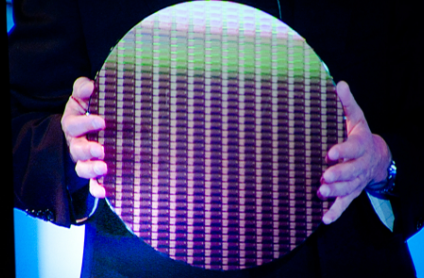- Ameya360 Component Supply Platform >
- Trade news >
- Industry-Wide Price Decline: Wafers and Cells Experience Accelerated Rate
Industry-Wide Price Decline: Wafers and Cells Experience Accelerated Rate
Polysilicon
Polysilicon prices continue to decline throughout the week, with sluggish turnover. The mainstream concluded price for mono recharge polysilicon is RMB 72/KG, while mono dense polysilicon is priced at RMB 75/KG and N-type polysilicon is currently priced at RMB 85/KG.

On the supply side, new production capacity is consistently being added, leading to a significant increase in actual output. However, demand in the market has been sluggish due to cautious downstream customers. Polysilicon inventory has been accumulating since this month and is expected to reach between 30,000 and 50,000 tons by the end of this month.
Turning to the demand side, profits for wafer manufacturers have plummeted to their lowest levels. Furthermore, crystal pulling manufacturers, who already have high inventory and anticipate declining polysilicon prices, have been reducing their purchase frequency to exert pressure on polysilicon companies to lower their prices.
This week, market order volumes remain sluggish, and the ongoing battle between polysilicon manufacturers and crystal pulling manufacturers persists. However, as polysilicon inventory continues to rise, the support for polysilicon manufacturers to maintain their prices weakens. It’s evident that they will eventually have to lower polysilicon prices and sacrifice some of their profits.
Wafer
The prices of wafer have still reduced throughout the week. The mainstream concluded price for M10 wafer is RMB 2.40/Pc, while G12 wafer is priced at RMB 3.40/Pc.
On the supply side, with wafer inventory remaining high and minimal growth in downstream customer demand, coupled with the recent decline in polysilicon prices, crystal pulling manufacturers find themselves compelled to scale back their production rates in order to alleviate the surplus supply. Conversely, on the demand side, cell manufacturers have not yet taken measures to reduce their output. However, the demand for modules downstream remains weak, intensifying the pressure they face due to excessive inventory. It is highly likely that they will need to lower their production rates in the near future to tackle the high inventory issue. This week, wafer prices have continued their downward trend, and the rate of decline has increased compared to last week. If there is no substantial boost in downstream customer demand, wafer prices are expected to persist in their descent.
Cell
Cell prices have still declined this week. The mainstream concluded price for M10 cell is RMB 0.51/W, while G12 cell is priced at RMB 0.53/W. The price of M10 mono TOPCon cell is RMB 0.52/W.
On the supply side, there are no indications that the production rates among cell manufacturers will decrease. However, downstream module manufacturers are expected to reduce their purchasing demand, which is putting increased pressure on specialized cell manufacturers regarding their shipments. In terms of cell types, the presence of less efficient N-type cells in the market has led to price discrepancies and resulting chaos. This has made it more challenging to ship N-type cells.
This week, the rate of decline in N-type cells has increased compared to last week, which is narrowing the price gap between P-type and N-type cells. On the demand side, the production rates of module manufacturers have remained constant. However, due to mounting cost pressures, specialized module manufacturers are displaying stronger signs of reducing their output and are slowing down their raw material purchases. With upstream product prices dropping and weaker downstream demand, there is insufficient support for cell prices. This week, prices for different cell types are declining, and the rate of decline is decreasing further.
Module
Module prices have gone down slightly throughout the week. The mainstream concluded price for 182mm facial mono PERC module is RMB 1.15/W, 210mm facial mono PERC module is priced at RMB 1.16/W, 182mm bifacial glass PERC module at RMB 1.16/W, and 210mm bifacial glass PERC module at RMB 1.17/W.
On the supply side, module manufacturers are maintaining their production rates, but there’s a divergence in their production schedules. First-tier module manufacturers still have ample orders to keep their operations running at full capacity, while specialized manufacturers are reducing their production schedules due to increased costs and lower order volumes. Additionally, specialized manufacturers are cutting back on their cell purchases.
On the demand side, module prices continue to decline, which has led to growing concerns in the overseas market regarding the diminishing value of modules. Consequently, they are slowing down their purchasing pace and focusing on depleting their substantial inventory. On the domestic front, the demand for modules is expected to decline as the peak season for ground-based installations comes to an end. Future demand hinges on the marginal changes in distributed PV installations. Currently, demand is sluggish, and with upstream product prices decreasing, the cost-side support is weakening. As a result, module prices are experiencing a slight decline.
Online messageinquiry
- Week of hot material
- Material in short supply seckilling
| model | brand | Quote |
|---|---|---|
| RB751G-40T2R | ROHM Semiconductor | |
| CDZVT2R20B | ROHM Semiconductor | |
| MC33074DR2G | onsemi | |
| BD71847AMWV-E2 | ROHM Semiconductor | |
| TL431ACLPR | Texas Instruments |
| model | brand | To snap up |
|---|---|---|
| BU33JA2MNVX-CTL | ROHM Semiconductor | |
| BP3621 | ROHM Semiconductor | |
| IPZ40N04S5L4R8ATMA1 | Infineon Technologies | |
| ESR03EZPJ151 | ROHM Semiconductor | |
| TPS63050YFFR | Texas Instruments | |
| STM32F429IGT6 | STMicroelectronics |
- Week of ranking
- Month ranking
Qr code of ameya360 official account
Identify TWO-DIMENSIONAL code, you can pay attention to


Please enter the verification code in the image below:

























